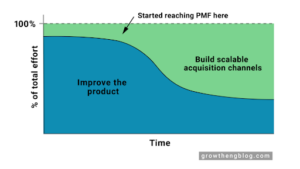As a company accumulates more data across departments — user profiles, order details, marketing metrics, etc. — it reaches a point in which it no longer makes good business sense to use human resources, typically analysts or engineers, to manually pull, merge, clean, and organize data sets. Such an onerous task regularly takes skilled and expensive employees away from non-transferable, high-value work that requires their expertise. Luckily, technology is much better suited to execute this workflow.

A modern data platform and the data platform services within it — sometimes referred to as a data platform as a service — enable companies to make the shift from employees to technology, while optimizing their data pipelines via integrations and automation. In this article, we’ll explain the components of a modern data platform, the most commonly needed data platform services, and how best-in-class tools like Mozart Data help businesses set up end-to-end data management faster and better.
What is a modern data platform?
The term “modern data platform” can be thought of as the full package. It includes the necessary core components of a data pipeline, known together as a modern data stack: ETL (extract, transform, load), a data warehouse, and a data transformation layer. When businesses expand beyond the modern data stack, they’re adding data platform services, which include data reliability, data observability, and data cataloging.
It’s important to note that a modern data platform is not the same as a customer data platform (CDP), which creates a centralized database of customer touch points and interactions.
How do I set up the components of a modern data stack?
Creating a modern data stack for your business can be achieved in two ways: assembling a collection of individual solutions or opting for an all-in-one tool, such as Mozart Data.
Companies that take the first approach often presume it to be cost-effective, as they typically add pieces over time as they feel they’re needed. Gradually, they work toward the capabilities of an all-in-one tool. However, doing this forces the business to continue to rely on manual work for the parts of the modern data stack that are missing; this is where data engineers frequently become necessary. Connecting these tools and maintaining the flow of data through them also frequently requires the support of engineers. This piecemeal approach is not recommended, as it turns out to be neither efficient nor cost-effective.
An all-in-one tool allows the business to seamlessly transfer the workload from people to technology instead of inefficiently moving through the buildout phase. Additionally, the essential tools of a modern data stack are interconnected and work best — both as a technology solution and to support the company’s business goals — when operating together. That’s why it’s both efficient and cost-effective to opt for an out-of-the-box, integrated tool like Mozart Data, which uses Fivetran to support 400+ data connectors, Snowflake to provide a data warehouse, and a data transformation layer that is built on a SQL editor. Mozart Data’s modern data stack can be set up by those with little technical expertise and at a fraction of the cost of other options, thanks to partner discounts with Snowflake and Fivetran. Our solution also includes data observability, data reliability, and data cataloging, so you can tie these tools into your data platform strategy.
Data observability as part of your data platform strategy
As mentioned, the modern data stack expands into the modern data platform when you add data platform services. One of the most important is data observability.
Data observability enables you to monitor the health of your data and quickly identify issues and where they originated, such as data transformation errors or dependent tables that didn’t sync. With data observability as a data platform service, stakeholders can see data lineage through the entire data pipeline, including source tables, data transformations of those tables, the resulting tables, version history, and quick-glance views of dependencies.
Having a quick visual guide that gives you the ability to understand your data lineage also makes automation more feasible, as it helps you decide how often to take actions like syncing data sources and running transformations. For example, you’ll be able to easily recognize which source tables are used for multiple different data transformations, and you may decide to update those more frequently. Likewise, if you have data in your warehouse for access but not active transformation, you may decide not to sync those tables everyday, thereby saving you monthly active rows with Fivetran.
Data reliability as part of your data platform strategy
Being data-driven starts with data reliability. You need to be able to trust that the data your business is working with is complete, accurate, and up-to-date. Only then can you feel confident in the analyses and recommendations being created from that data. Data observability and reliability are connected parts of a business’ data platform architecture, as the former enables you to scan a visualization of your pipeline and confirm that nothing is broken.
Your data platform company should include alerts as part of the data reliability service, as they help a business proactively catch and debug issues. There are two important types of alerts.
-
Automated alerts: These allow you to be notified if certain conditions are met on a table. For example, if values are missing from a specified column or if a value exceeds a defined amount, which could flag an error or a milestone achievement.
-
Transform test alerts: This will notify you if something is wrong with a transformation and pause the process. For example, you can receive an alert if data is out of date or to track outcomes, such as unusually high or low returned values.
Data cataloging as part of your data platform strategy
Cataloging organizes your data assets — labeling, tagging, and documenting — to make them easier to understand, locate, and work with. This is especially important for scaling teams, as it gives everyone a shared vocabulary and an efficient way to find the information they need.
Features that help with data cataloging include creating tags, descriptions, and comments on tables and transformations. Individuals can favorite tables and easily view recently accessed tables to answer business questions without delay.
How to set up a modern data platform with Mozart Data
Managing all of these data platform services manually — and doing it well — is near impossible without extensive personnel resources, and that’s why we do it for you. Mozart Data provides an out-of-the-box modern data platform with built-in tech integrations and tools that enable observability, reliability, and cataloging — so anyone in your organization can find and work with complete, accurate, and up-to-date information. When individuals have these capabilities, whether they are very technical or not at all, you’re saving them and the business time and ensuring they work on projects that are impactful.
Our intuitive tools make it easy for your team to shift from manual data management to automation and quickly get started using the aforementioned data services. Contact us to schedule a demo to see our modern data platform in action.


